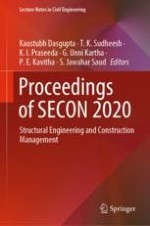This book gathers peer-reviewed contributions presented at the 1st International Conference on Structural Engineering and Construction Management (SECON’20), held in Angamaly, Kerala, India, on 14-15 May 2020. The meeting served as a fertile platform for discussion, sharing sound knowledge and introducing novel ideas on issues related to sustainable construction and design for the future. The respective contributions address various aspects of numerical modeling and simulation in structural engineering, structural dynamics and earthquake engineering, advanced analysis and design of foundations, BIM, building energy management, and technical project management. Accordingly, the book offers a valuable, up-to-date tool and essential overview of the subject for scientists and practitioners alike, and will inspire further investigations and research.
